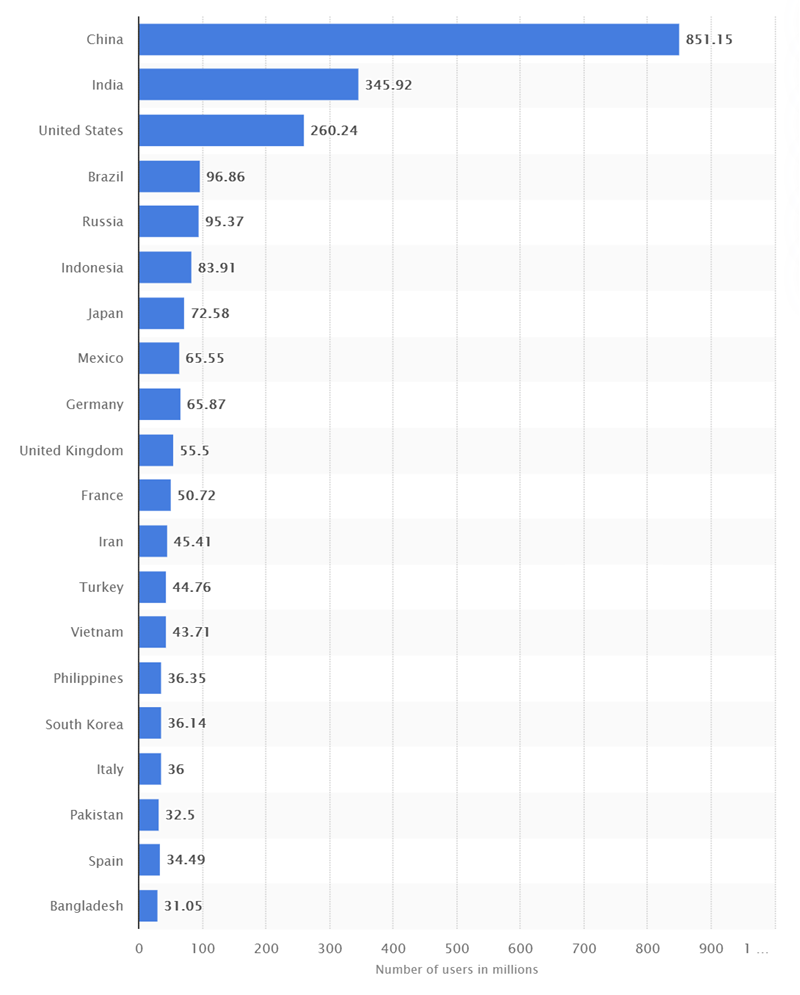Most emissive display devices use backlit LCD screens that emit a powerful light—equal to a car headlight before it’s filtered–directly into our eyes. It’s generally accepted that the blue light emitted by phones, tablets, and laptops is not good for us. Studies have shown that this strong blue light can damage the cells in the retina, forcing our eye muscles to constantly find a point of focus, and ultimately creating a generation of individuals handicapped by myopia. What’s more, the health consequences of being nearsighted—retinal detachment, glaucoma, and cataract—are all related.

Seismic Rise in Mobile Screen Time
Instead of playing outdoors or listening to music or watching TV, children today have become addicted to mobile devices. According to Common Sense, a nonprofit organization that reviews and rates media, kids spend about two hours and 19 minutes a day with some form of electronic media. And we’ve seen some dramatic changes in how kids engage with media. About 42% of kids aged 8 and under now own their own tablet, compared to less than 1% in 2011, notes Common Sense Media Research.
Adults are also becoming addicted to mobile devices. According to Statista, the worldwide number of smartphone users today surpasses 3 billion and is forecast to further grow by several hundred million in the next few years. China, India, and the United States have the highest number of smartphone users. Global mobile data traffic is projected to increase by nearly sevenfold between 2017 and 2022. The global mobile population will amounts to 4 billion unique users, and mobile devices will account for 48% of web page views worldwide.
Smartphone Users Worldwide
 Source:Statista
Source:Statista
The Perils of Blue Light
Unlike reading textbooks, the blue light emitted by tablets, laptops and mobile phone screens can create chromatic aberrations. Short wave blue light is perceived by the eye before longer wavelengths, which generates a myopia stimulus. And prolonged use results in negative effects on the eye. Instead of playing outside, children today spend most of their time in classrooms or in their own rooms with their favorite devices – denying them the protective effects of exposure to daylight. Granted, many factors lead to the onset of myopia, but according to PubMed, a child’s environment remains a key factor—as opposed to excessively reading books or genetics.
Alarming Rise in Myopia
Excessive exposure to blue light has been linked to several major health concerns, including myopia and insomnia. Children are the most vulnerable since their delicate retinas are highly susceptible to the dangerous effects of blue light. Growing up, I was the only student in my entire school who wore glasses and we barely had TV then.
Today even elementary school children spend hours with phones and tablets, so it’s no surprise that myopia rates have shot up in the last two decades. Singapore is considered to have the highest rate in the world, with approximately 80 % of the population being affected by it. Asia has witnessed an unprecedented jump in myopia. Sixty years ago, 10–20% of the Chinese population was shortsighted. Today, up to 90% of teenagers and young adults in China are myopic. In Seoul, 96.5% of 19-year-old men are shortsighted. In the United States and Europe, half of all young adults suffer from myopia—double that of half a century ago.
Spending time outdoors appears to reduce the occurrence of myopia. Animal experiments back this up. In fact, powerful indoor lights could offer some relief, and lightboxes are even available to treat this disorder. The belief among many is that light stimulates the release of dopamine in the retina, and this neurotransmitter serves to block the elongation of the eye (myopia) during development.
Reflective Displays: Power Misers that Read Like Paper
Our experience with color in nature is reflective. Instead of color being beamed directly into our eyes, we see the way light plays off an object. Reflective displays mimic this experience, absorbing certain color wavelengths and reflecting others.
By reflecting ambient light instead of emitting it, reflective displays can be read as easily as paper in sunlight or room light. This provides for a more natural viewing experience. Eyestrain is significantly reduced, giving our eyes a rest from intense backlit and emissive displays like backlit LCDs. Recent research suggests that using light-emitting devices at night can negatively affect sleep, circadian timing, and your alertness the following morning.
Reflective displays are also far more energy efficient. Like paper, they display images without the need for their own light source. They need no electricity to emit light, which makes them power misers compared to conventional LCDs. Certain reflective display configurations can even run in a no-battery mode using NFC or solar power. It’s no wonder this technology has grown increasingly popular in signage, electronic shelf labels, luggage tags and for various other uses.
Thanks to some major tech breakthroughs, reflective LCDs now support higher resolutions, video, and a reasonable color palette. Combined with front lights, reflective LCDs can be lit by a single LED, thus enabling night-time viewing.
With the world going mobile and billions watching and learning on displays, the dangers of creating a myopic generation can’t be overstated. One solution appears to be replacing potentially harmful emissive displays with reflective devices. Short of getting our news from town criers or newsprint, or listening to lectures outdoors from a Socratic scholar, the world is turning digital. And that means looking ahead, anticipating needs before the needs overtake us.
Sri Peruvemba is CEO of Marketer International and a Board Member and Chair of Marketing of The Society for Information Display (SID). With over 30 years of experience in the technology industry, Peruvemba has been an influential advocate in the advancement of electronic hardware technologies. SID and Display Week provide a unique platform for industry collaboration, communication, and training in all related technologies while showcasing the industry’s best new products.
(Editor’s Note: Sri was, of course, associated with E Ink and for some time with ClearInk (a reflective display startup) and still works with Visionect, an integrator of reflective displays. (BR)

